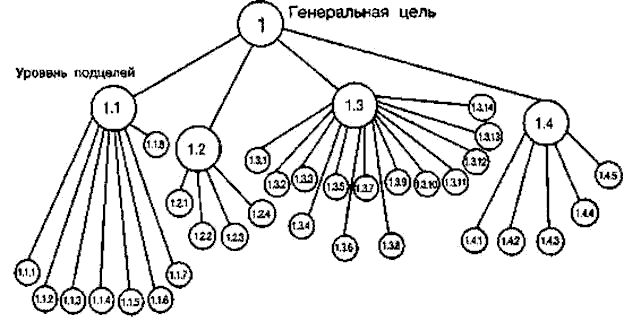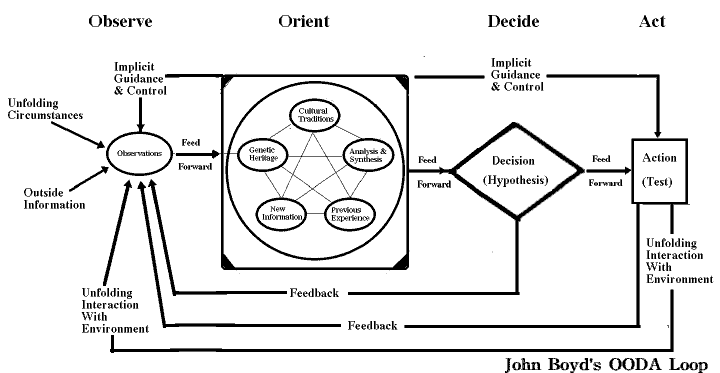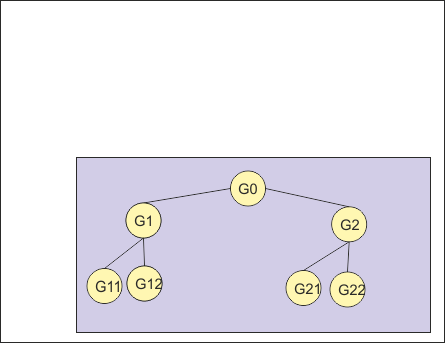Abstract
Сontent
Introduction
Goal-oriented approach to design involves the study and analysis of the purpose of creating an automated system for effective implementation, unifying approach to the design of process control and simplify the integration process.
1. The objective, tasks and relevance of research
Goal-oriented automated control systems architecture is based on goal-oriented approach [1]. In goal-oriented ACS an important component is goals control unit responsible for structuring purposes, its storage and management goals for the system.
The purpose of master's work is to develop a goal-management software for goal-oriented ACS.
The initial objectives are to choose ways of representing and storage goals, as well as the development of goal-management methods.
Scientific novelty and relevance of the fact that there is currently no unified way to manage goals in multi-level goal-oriented control systems (Goal-oriented ACS).
2. Researches and developments in goal-orientation
At the global level, researches and development on the goal-orientation subject were performed by University of Arizona (Arizona State University), the representatives of the Modular Mining Systems Inc. (Sergey Seroukhov, Product Line Architect, Modular Mining Systems Inc., Tucson, Arizona, USA) and Machine Guidance Systems (Andree Rottig, Product Manager, Machine Guidance Systems, Belo Horizonte, Brazil).
At the national level, the research in self-organizing systems area started Victor Glushkov (Institute of Cybernetics of USSR).
At the local level, in DonNTU, research and development in this area now are conducted by prof. Yuriy Skobtsov, assoc.prof. Maxim Privalov, assoc.prof. Vadim Skobtsov, Assoc.prof. Alexander Telyatnikov.
3. Goal-oriented approach principles
The key design principles of goal-oriented systems are the principle of continuous management and goal-orientation.
Continuous management determines interactions in the system specific to multi-level systems that are based on the following principles: sequential vertical positioning of subsystems priority of subsystems actions of the upper levelthe dependence of the top-level subsystems actions on the actual lower levels execution of its functions [2].
The principle of goal-orientation determines goals the system designed for.
In general, goal is a condition to which the tendency of object transforming is directed. It usually arises from a specific problem situation. The system serves to solve the problem: carrying out its functions with the use of certain structures, the system provides a solution [3]. There's no system without a goal and goal is the main reason for the group of elements to integrate into the system and act. The goal of the system is set from outside, and the system should only fulfill this goal. External goal-setting action may be performed by another system (or systems) [4]. Based on this principle, we can represent the system as a set of subsystems. Each of them has its own goals at a lower level and its own subsystems. Goals levels:
- policies, laws and regulations, the most high-level goals;
- long-term goals, strategic initiatives, organization structuring, organization mechanisms forming;
- short-term goals: typical projects, daily activities of the organization;
- operational: dispatching, resource management, acting in situations of emergency;
- specific operations at the resource level.
Decomposition of goals accomplished by building a tree of goals. Building a tree of goals is systematic method to achieve the objectives of management [5]. During construction, the main goal of the tree is divided into sub-goals, and this process is repeated iteratively until the terminal nodes of the tree will not be obtained by elementary steps. An example of such a structure is shown in Figure 1.

Figure 1. Goal tree
The work of a goal-oriented system as a whole and of each of its components is a continuous OODA management cycle. It consists of four stages: observation, orientation, decision, action [6].

Figure 2. OODA-cycle
The model developed by D. Boyd OODA and has shown its effectiveness in military affairs and business. This cycle can be applied to any management process.
In goal-oriented automated system the stage of observation corresponds to the collection of system information, the stage of orientation corresponds to the definition of the problem, the solution phase (decide) is for planning further actions, and the stage of action complies with all the operations of the system, performed in accordance with the decision.
Architecture of Goal-oriented ACS [7] is built in a way that each stage of the control cycle corresponds to a functional unit. Also, it contains a block of interaction, designed for connection and communication system components. Communication is carried out using structured information: goals and information about the system operation.
4. Goal management in goal-oriented ACS
An important element of Goal-oriented system is a subsystem of goal management based on goals management decisions are taken and performed actions. goals management include: formulation of goals (defining, structuring), analysis and evaluation goals, transfer of goals, goal progress.
4.1 Goal definition
Goal – an expected state of affairs which a person or system plan or intend to achieve. To determine goals you can use the principle of 5WH, which allows to describe the goal in specific, measurable and time-specific terms:
W= {Who, What, Where, When, Why, How} – Множество-определение цели.
Since the goal a state of the system in the future, define the system state at time t, as a set of parameters:
P = {p1, p2, ..., pN} – system parameters, where N – number of parameters;
The purpose can be seen as a set of definitions, parameters, target parameters and limitations:
G=<W, P, C, B>
Target parameters: С={c1, c2,…,cN}, where N – number of target parameters.
Limitations: B={bL1, bH1, bL2, bH2, …,bLM, bHM}, where M – number of given constraints.
4.2 Breakdown goals
High-level goals are detailed, broken down into sub-goals are passed through levels of management until such time as they are not executed. Results of execution get together and contribute to the overall achievement of the organization. Structuring can be done in different ways.
One of the methods used for structuring goals, may be the method of WBS (Work Breakdown Structure) - a hierarchical decomposition of goals into a sequence of steps (tasks). The result of structuring is a goals tree (Figure 3).

Figure 3. Building a goal tree (animation: 5 frames, 5 cycles, 45 KB)
4.3 Achieving the goals
Based on OODA loop every element of are executed actions to achieve goals. The criterion for achieving the goal may be the current value of the deviation from the target parameters:
 (1)
(1)
Here ci – target parameter of the current state of the system, ci' – the desired parameter value specified purpose. That is, the achievement of the objectives is to minimize the value of Q, subject to the restrictions bLj ≤ pj ≤ bHj, j ∈ [1; M], where M – number of limitations.
Conclusion
Goal-oriented approach allows to create systems based on general principles, which simplifies the process of their integration. Design of goal-oriented automated control systems based on detailed analysis of the goals and takes into account the architectural features of goal-oreiented approach. An important component of Goal-oriented ACS is goal. management subsystem The analysis showed that goal Goal-oriented ACS possible represented in the form of definitions, parameters, target variables and constraints. To assess the achievement of goals the criterion of achievement uses, taking into account the hierarchy of goals.
Note
At the moment master's work is not complete yet. Final completion date: December 2012. The full text of the work and its materials can be obtained from the author or his scientific adviser after that date.
References
- Привалов М.В., Сероухов С.А. Перспективы применения целеориентированного подхода к созданию АСУ. Информационные управляющие системы и компьютерный мониторинг – Донецк, ДонНТУ – 2010.
- М.Месарович, Д.Мако, И.Такахара. Теория иерархических многоуровневых систем. M.:Мир, 1973. – С. 20.
- Сурмин Ю.П. Теория систем и системный анализ: Учеб. пособие. / Сурмин Ю.П. – К. : МАУП, 2003. – 368 с.
- Теория систем и системный анализ в управлении организациями: Справочник: Учеб. пособие / Под ред. В.Н.Волковой и А.А.Емельянова. – М. : Финансы и статистика, 2006 p. – 848 с.
- Долятовский В.А. Исследование систем управления: Учебно-практическое пособие. / В.А.Долятовский, В.Н.Долятовская – М. : ИКЦ «Март»;, 2003. – 256 c.
- McElman, C. From Buttons to Bits – Achieving Level 3 Integration. Paper 4383, APCOM 2009 conference, Vancouver BC, Oct. 2009. / C. McElman, S. Seroukhov // [Электронный ресурс]. – Режим доступа: www/URL: http://www.mmsi.com/.
- T.J. Grant. Unifying Planning and Control using an OODA-based Architecture. // [Электронный ресурс]. – Режим доступа: www/URL: http://www.c2coe.org/.
